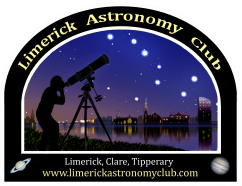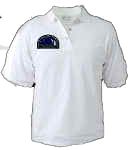CELEBRATING ASTRONOMY
IN IRELANDS
MIDWEST SINCE 1986
Home Up About The Club Joining the Club Contact the Committee Club News Meetings Timetable Club Equipment Observing Sites Burren Starparty Gallery Weather Telescope Help Books/Shops + Links

Annual Meteor Showers:
|
Meteor showers occur when the Earth passes a debris stream left over by a comet, the streams can be dense or sparse leading to strong and weak meteor showers, some meteor showers are so weak as to be almost imperceptable. Others are quiet strong and can lead to a good numbers of meteors. When the Earth encounters one of these debris streams, the meteors caused by them tend to look like theyre coming from a single point in the sky, much like the effect you get when you stand on a bridge looking down on a motorway, the cars appear to originate from a single point on the horizon, and then either go left or right as they get nearer. The point in the sky the meteors appear to be coming from is called the radiant. The constellation where the radiant lies usually gives its name to that meteor shower, so the Perseid meteor shower has its radiant in the constellation Perseus. Any meteors who's path does not trace back to the radiant are called "Sporadic Meteors", these are meteors that would have occured irregardless of the meteor shower and are not associated with it. You would expect to see between 5 and 10 of these per hour on any given night. The higher the radiant is, the more meteors you'll see in the meteor shower. Meteor showers are rated by a term call "Zenith Hourly Rate" (ZHR). This is the estimated number of meteors you would see if the radiant was directly above you. When observing meteor showers, it is best to observe them after midnight, in the evening you are looking into the sky where the Earth has already been. After midnight the Earth has rotated enough that you're looking into the direction the Earth is moving into. Think of it like this, the Earth is a car you are sitting in, before midnight you are looking out the rear window and after midnight you are looking out the front window, you're going to see more bugs hitting the front windscreen then the back window. You will see meteors before midnight, but you'll see more after. Most meteors are only the size of a grain of sand, ones the size of a big rock can survive the firey entry into the Earth atmosphere. If it reaches the surface it is called a meteorite. Exceptionally bright meteors are called "Fireballs". If a large rock/meteor hits the atmosphere and bounces back into space, it is called a "Bolide" The bright meteors can leave a persitant trail that can last several seconds. A dark sky is best for observing meteors as city lights will overwhelm the dimmer ones and most meteors tend to be dimmer with a small minority been very bright. A large Moon in the sky is also a distinct disadvantage. The club hold observing nights for the best meteor showers throughout the year, weather dependent. |
For more information, see meteorshoweronline.com
| Name | Begins | Maximum | Ends | ZHR | Notes |
| Quadrantids | January 1 | January 3 | January 6 | 110 | Radiant is on the constellation Bootes (north) |
| Corona Australids | March 14 | March 16 | March 18 | 5 | |
| Lyrids | April 19 | April 22 | April 24 | 12 | Comet Thatcher (1861) |
| ETA Aquarids | May 2 | May 4 | May 7 | 20 | Comet Halley |
| June Lyrids | June 10th | June 15 | June 21 | 8 | |
| Ophiuchids | June 17 | June 20 | June 26 | low | |
| Capricornids | July 10 | July 26 | August 15 | 6 | |
| DELTA Aquarids | July 15 | July 28 | August 15 | 35 | |
| Piscis Australids | July 15 | July 30 | August 20 | 8 | |
| ALPHA Capricornids | July 15 | August 2 | August 25 | 8 | |
| IOTA Aquarids | July 15 | August 6 | August 25 | 6 | |
| Perseids | July 25 | August 11/12 | August 18 | 68 | Comet Swift-Tuttle, usually a very good meteor shower. |
| KAPPA Cygnids | August 19 | August 20 | August 22 | 4 | |
| Draconids | October 10 | October 10 | October 10 | variable | Comet Giacobini-Zinnec |
| Orionids | October 16 | October 21 | October 26 | 30 | Comet Halley |
| Taurids | October 20 | November 4 | November 25 | 12 | Comet Encke |
| Cepheids | November 7 | November 9 | November 11 | 8 | |
| Leonids | November 15 | November 17 | November 19 | variable | Comet Tempel-Tuttle, Every 33 years or so, next due in 2032. |
| Andromedids | November 15 | November 20 | December 6 | low | Comet Beila |
| Pheonicids | December 4 | December 4/5 | December 5 | 5 | |
| Geminids | December 7 | December 14 | December 15 | 58 | One of the best of the year. |
| Ursids | December 17 | December 22 | December 24 | 12 | Comet Tuttle |

